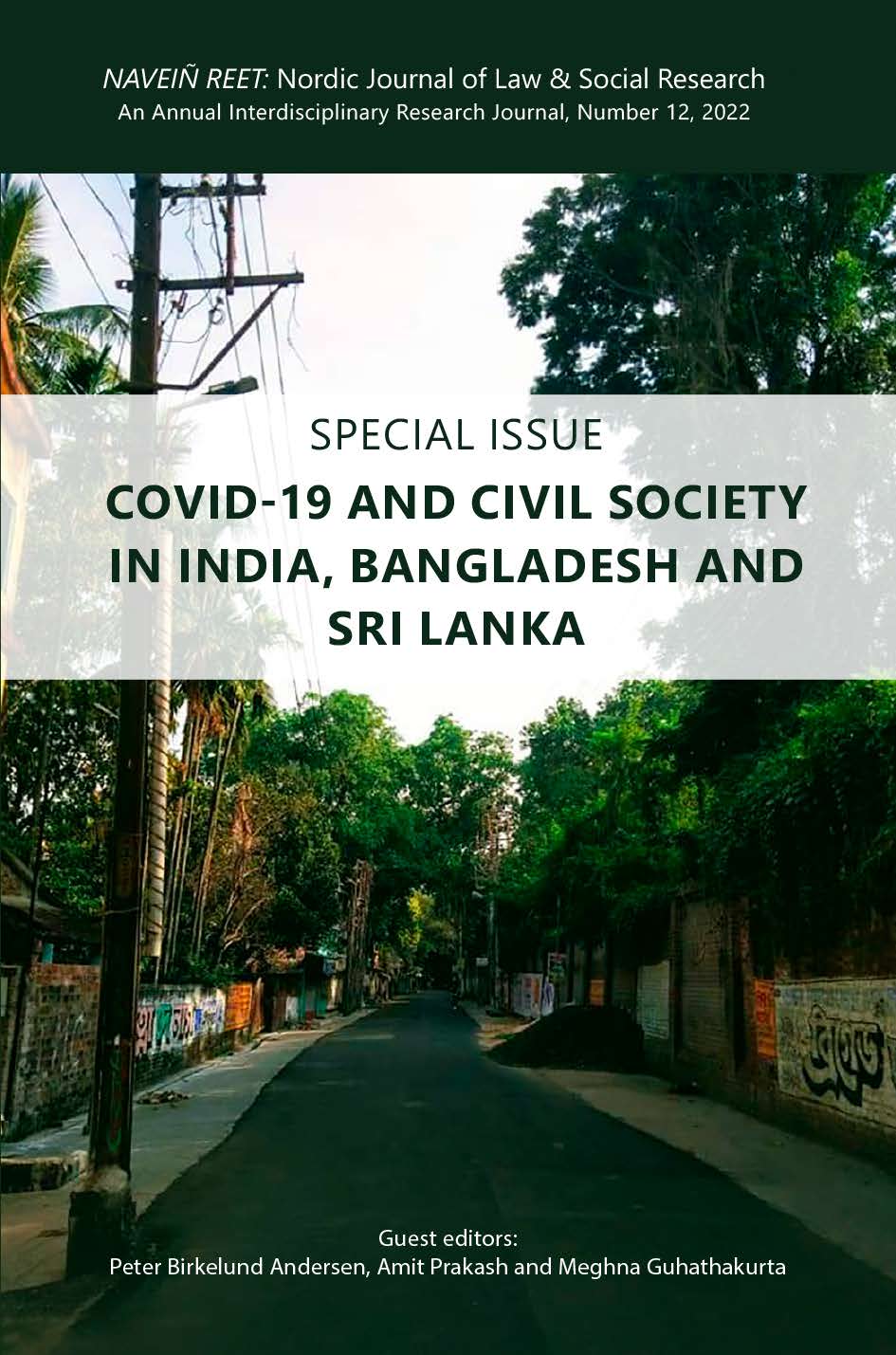Surviving and Coping with the Pandemic
Minority Dalit Groups in Northern Bangladesh
Nøgleord:
Dalits, Pandemic, Food crisis, Emergency responses, Alternative coping strategiesResumé
Background: The pandemic has aggravated inherent inequalities within the structures of society, whatever their location. Among such socio-economic inequalities, those based on caste – social groupings based on descent and associated with occupation – are the worst. In a world where humanity in general is threatened, the misery and sufferings of those whose humanity is questioned as a part of the customary practice of ‘untouchability’ know no bounds. This article focuses on the impact and survival strategies adopted by the Dalit groups in the northern part of Bangladesh.
Objective: The article aims to reveal the experience of Dalit groups in Bangladesh, whose stories of both suffering and resilience while restricted by social isolation and lockdown during the Covid–19 pandemic remain largely untold.
Methods: The study used a mixed-method approach. Quantitative analysis is based on 80 respondents to a semi-structured questionnaire distributed equally between Rabidas and Patni Dalit groups in northern Bangladesh. Qualitative analysis is based on data collected from 8 focus groups, 4 key informant interviews, 10 life experience case studies, and 2 in-depth interviews. Survey responses were analysed using SPSS software and a content analysis framework was used for qualitative data.
Results: Half of Rabidas community members in Saidpur continue to ply their traditional trade of repairing shoes and are locally known as muchis or cobblers; the vast majority of Patni respondents continue to make a living out of crafting traditional bamboo products. Both communities live hand-to-mouth and earn 100–500 BDT (1–5 euros) per day. During the lockdown period, no one was allowed to go outside and the earnings of many decreased to less than 50 BDT. Specifically, during the first lockdown, the income of 47.5 per cent of Rabidas respondents decreased from at least 100 BDT per day to less than 50 BDT per day, and 75 per cent of Patni respondents, all of whom had earned at least 150 before the lockdown, reported an income of 101–150 BDT per day. 62.5 per cent of Rabidas and 60 per cent of Patni respondents were limited to a weekly expenditure of 151–200 BDT, which is insufficient to fulfil a family’s minimum requirements. Government funds and relief packages did not come their way. 75 per cent of Rabidas and 100 per cent of Patnis were unable to access humanitarian relief during the pandemic. Even though civil society members and some volunteer organisations helped them during the first lockdown, they were mostly absent during the second. After the first lockdown was relaxed, their earnings suffered because few people came to the market; all Bangladeshis were trying to save money. Consequently, Rabidas and Patni incomes decreased drastically even as the prices of all necessities hiked up. 72.5 per cent of families had shortages and 51.5 per cent faced difficulties in bearing the cost of treating other diseases. 66.2 per cent of families could not afford to put meat and fish on their plates, 57.5 per cent eliminated extra family expenditures, and 25 per cent bought less food, even after borrowing from relatives, accepting NGO loans and buying through credit at shops. Borrowing money from family and friends was not always an option, as nobody had a surplus. Lack of lobbying (97 %) was stated as the main cause of not getting the allocated amount of government support during this humanitarian crisis. They did, however, develop some coping mechanisms to survive.
Conclusion: An equitable and inclusive distribution system and a special corona package for the marginal Dalit groups can help Rabidas and Patnis recover from their damaged livelihood.
Downloads
Publiceret
Citation/Eksport
Nummer
Sektion
Licens
Counting from number 12 (2022), articles published in NNJLSR are licensed under Attribution 4.0 International (CC BY 4.0). Readers are allowed to copy and redistribute the articles in any medium or format, to adapt and revise the articles, and use the articles for commercial purposes, provided that the readers give appropriate credits.
No Creative Commons licenses are applied on articles in number 1 (2009)-11 (2021). All rights reserved by the authors. Readers are allowed to download, read, and link to the articles published in volume 1 (2009)-11 (2021), but they may not republish or redistribute these articles without permission of the authors.

